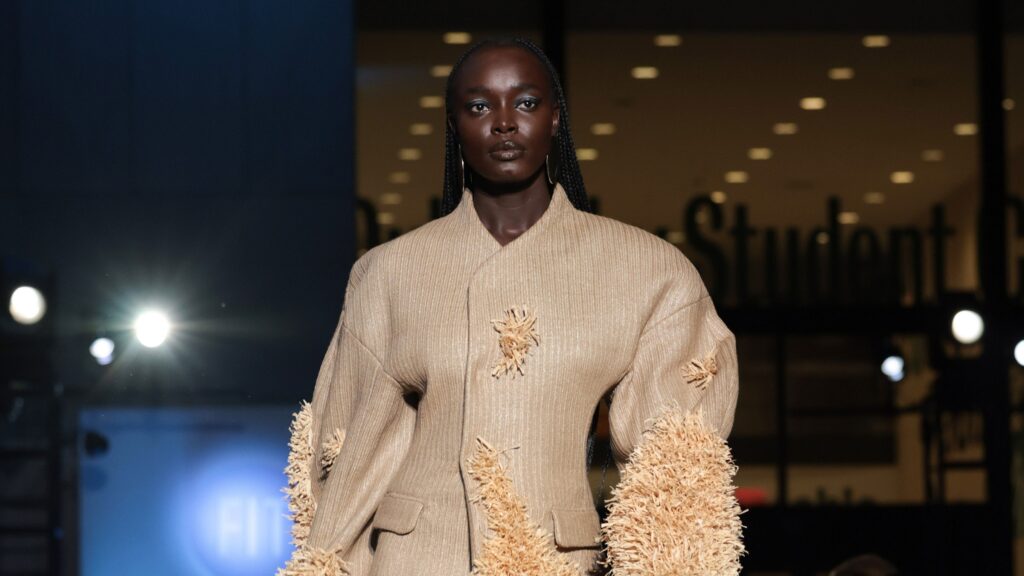The Future of Fashion: A Showcase of Innovation at the Fashion Technology Institute
Event Overview
The Graduate Class of the Fashion Technology Institute presented an impressive collection of 82 designs at their annual fashion show, featuring five distinct categories: sportswear, children’s clothing, knitwear, intimate apparel, and special occasion wear. The event was sponsored by Macy’s, which also selected designs from several students for production.
Progressive Themes and Gender Insights
In recent years, fashion design students have increasingly engaged with progressive agendas, reflecting innovative approaches in their work. This year’s display particularly emphasized color palettes and silhouettes, notably without a clear exploration of gender themes. According to Troy Richards, dean of the Faculty of Arts, this approach may signify an overcorrection from previous progressive standings, especially given that the curriculum for menswear is limited to an associate degree and not included in the BA showcase.
Post-Pandemic Creativity
In the wake of the pandemic, students have resumed a focused exploration of materials. The dean noted a remarkable enhancement in students’ craftsmanship and an increased interest in varied textures and materials. This evolution was evident in several standout pieces from the showcase:
- Allison Margaret Smith: Utilized unconventional materials like raffia, straw, jute, and balsa wood.
- Austin Marshalek: Drew inspiration from Pittsburgh’s evolution, using historic photographs as a basis for knitwear designs.
- Nathaniel Samuel: Crafted a Bell Epoch-style opera coat, referred to as a “love letter” to New York.
Personal Inspirations in Design
The students also showcased deeply personal narratives through their designs:
- Evelyn Hernandez: Aimed to create a shawl with legs, rooted in her Mexican heritage.
- Jaeg Kim: Interpreted traditional Korean attire with a contemporary twist in a charming ensemble.
- Jennifer Ze: Incorporated her family’s stone masonry background into a blue pleated garment.
- Amanda McVay: Explored the Scottish diaspora tradition by emphasizing patterns in her designs.
- Ray Fan: Designed evening wear inspired by ancient Tibetan religious conventions.
- Bilegbayar Senegedorj: Drew from Mongolian shamanic traditions for his creations.
- Servan Bilich: Adapted traditional jackets and pants into delicate pieces, inspired by the transformative tales of the “Chamerang.”
Conclusion
This year’s fashion show illustrated the innovative spirit and artistic diversity present among the students of the Fashion Technology Institute. Their ability to blend personal narratives with broader cultural themes suggests a promising future for fashion design that continues to evolve and embrace inclusivity.


